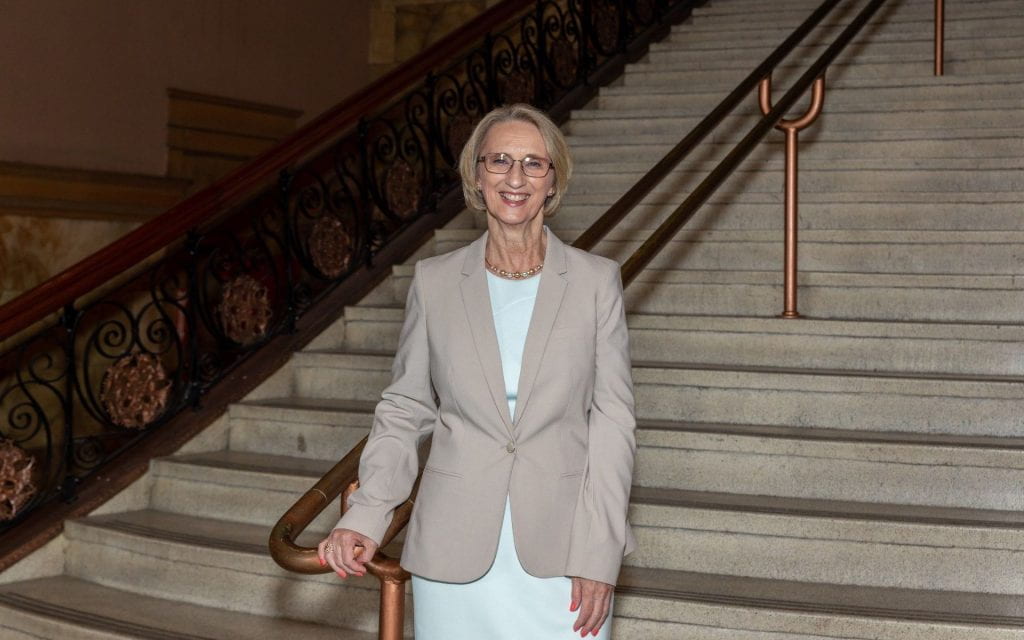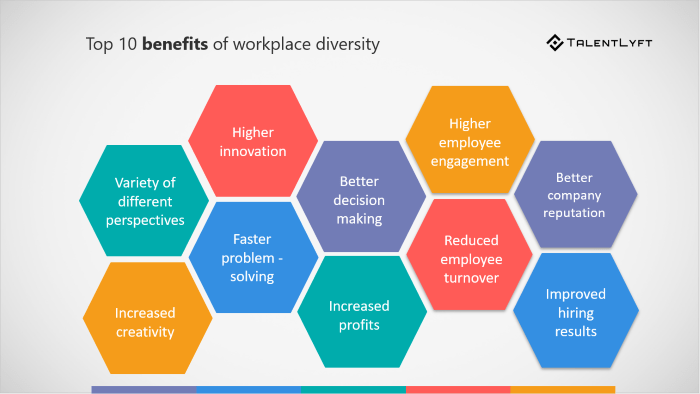Schaumburg Campus COO Mablene Krueger and Ann Bresingham
Diversity and inclusion are terms that are often discussed, frequently misused and (far too commonly) mistakenly interchanged. Culture, that elusive “feel” of an organization, the values and beliefs it exhibits, can also take years to change. I’ve seen estimates of 2–3 years at a minimum and up to 10 years for a culture to evolve.
Why is an inclusive culture important? Experts say culture can trump everything else, including organizational strategy. Therefore, as our organizational leadership monitors the external environment, our strengths and our vulnerabilities, it has never been more important to create and support an exemplary culture.
While I don’t pretend to be an expert on culture, I know people who are! President Ali Malekzadeh at Roosevelt University specializes in higher education strategy and organizational culture. He reminds us that the two are intertwined and dependent on one another. Check out his conversation about the broader topics of diversity, equity and inclusion with Angela Jordan, the associate dean of student life, equity and inclusion.
In a TalentCulture article, inclusion expert Simma Lieberman says, “In an inclusive culture, everyone has the opportunity to do their best work no matter who they are, what they do or where they work.” Later in the article, Catalyst’s Anna Beninger adds, “Diversity is a fact; inclusion is a choice.” Are we choosing to be inclusive, particularly right now in our remote way of life?
Conversely, Robert Morris University-Illinois alumnus Carlos Butler-Vale, global director of diversity and inclusion at McDonald’s, recently reminded me, “Inclusive leadership, especially during these times, should not be seen as a choice. Rather than thinking of it as a matter of ‘if,’ it should be seen as a matter of ‘how.’ Both employees and customers [students] have gone beyond requesting inclusive leadership to expecting (and sometimes, demanding) it.”
The benefits of an inclusive culture are well documented. The Denver Foundation Inclusiveness Project reminds us that nonprofit organizations are by nature committed to making our communities healthier, stronger and more enriching for all members. Therefore, the basic role of a nonprofit is to influence the quality of life for (all) people in the communities we serve.
The same study documents that an inclusive organization, quite frankly, “makes you better” with benefits that include:
- Higher job satisfaction
- Lower turnover
- Higher productivity
- Higher employee morale
- Improved problem-solving
- Increased creativity
- Increased organizational flexibility
- Decreased vulnerability to legal challenges
And creating and supporting an inclusive culture is the right thing to do! One of the best infographics I’ve run across lately regarding diversity (and I would argue it works for inclusion) is below. If we were to add arrows from each hexagon to the one in the bottom-center, increased profits, the argument would be clear. The benefits of a diverse workplace are many; the benefits of an inclusive workplace all point toward increased return on investment, profit, the bottom line. And, let’s face it, for a not-for-profit organization, no surplus = no mission.
Diversity is a starting point, but it’s not enough. “Simply having a wide roster of demographic characteristics won’t make a difference to an organization’s bottom line unless the people who fall into any one demographic feel welcomed,” according to a recent article in Gallup’s Workplace magazine. “Inclusion refers to a cultural and environmental feeling of belonging.”
A great example of inclusivity happened late last week in a virtual meeting at Roosevelt University, the University I’m proud to call my home. Over 200 employees and over 1,300 students had moved from Robert Morris University-Illinois to Roosevelt University on March 9. President Malekzadeh and I (as the former RMUI president) created what we believe to be a true model for future mergers and acquisitions in higher education, focusing on integration and inclusivity.
Before the ink was even dry on our integration, the health care crisis forced our faculty, staff and students to shelter in place. This meant that just as our employees began to truly get to know one another and work more closely together, they were forced into a virtual existence. And yet, barely five weeks after the official date of the “marriage” of these two universities, the University Senate (the primary shared governance body) nominated and elected two faculty members for consideration to fill seats on the Board of Trustees.
One is an assistant professor at Roosevelt who came over with the RMUI faculty. Keep in mind none of the voting members of the Senate knew this faculty member prior to the public announcement (October 2, 2019) of the potential transaction.
Roosevelt faculty senate chair Stuart Folse spoke of the culture this way: “It does not surprise me that a member of the Robert Morris Experiential College was elected to fill the position of faculty trustee on the Board. This kind of action is a part of who we are as an institution and is a core principle of our mission. It is true now, it has been true historically (especially during the 22 years that I have been associated with RU), and my hope is that we will continually prize and demonstrate this manner of inclusiveness in our future.”
Daily interactions are the most telling sign of whether we have an inclusive culture or not. The ongoing work of our collective faculty, as task force members prior to the integration and now virtually, demonstrates the model of inclusivity inherent in the missions of both our institutions. Roosevelt University faculty, administration, alumni and students will continue to demonstrate this spirit.
One great example comes from Harold Washington, the 51st Mayor of Chicago and a Roosevelt University alum: “Chicago is one city. We shall work as one people for our common good and our common goals.”
Mablene Krueger is the chief operating officer of Roosevelt University’s Schaumburg Campus and former president of Robert Morris University Illinois; Ann Bresingham is chief of staff to the chief operating officer of Roosevelt University and former vice president of human resources of Robert Morris University Illinois.
Roosevelt University is a national leader in educating socially conscious citizens for active and dedicated lives as leaders in their professions and their communities. For more information, visit www.roosevelt.edu.

